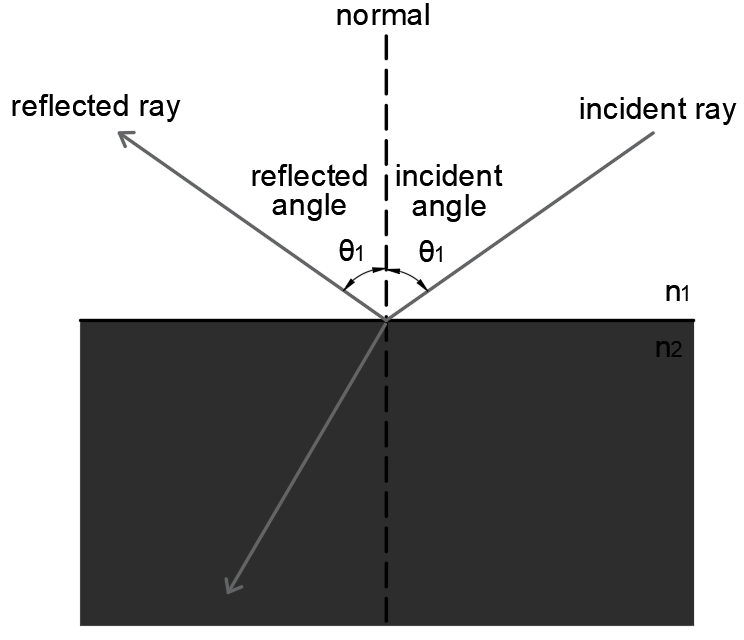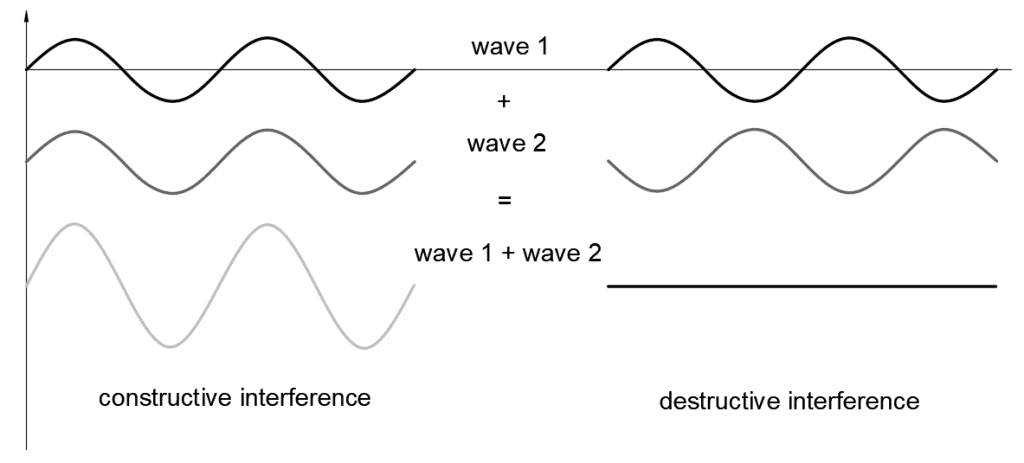Key Takeaways:
- Geometric Optics vs. Wave Optics: Geometric optics treats light as rays, ideal for interactions with objects much larger than the wavelength, while wave optics considers light as electromagnetic waves, crucial for understanding interference, diffraction, and interactions with small objects.
- Geometric optics focuses on reflection and refraction, explaining light’s behavior in everyday applications. Wave optics explains phenomena like interference, diffraction, and is key to technologies like anti-reflective coatings.
Geometric Optics vs. Wave Optics
Often people working in optics and photonics confuse geometric optics with wave optics, but they aren’t the same thing! Geometric optics treats the propagation of light in terms of “rays”, where each ray travels in a straight line. But in wave optics, we consider the propagation of light in terms of electromagnetic waves.
Since light has a dual nature, both geometric optics and wave optics are relevant and incredibly useful in their own way. Geometric optics is most relevant when light reacts with objects several times larger than the light’s wavelength. It’s when light interacts with very small objects— smaller than you can see with your naked eyes— that the wave characteristics come into the foreground.
The path of light in geometrical optics is determined by the laws of reflection and refraction at the interface between different media. Wave optics predicts interference and diffraction, two important concepts that geometric optics can’t explain.
This article is the first of a series on “Avoid Optical Pitfalls”. Each article will look at a topic that is often confused, and provide a brief, easy-to-understand explanation of the key foundational concepts involved.

Geometric Optics
Geometric optics was, historically, the first science of optics. Before we knew about the wavelength nature of light, we saw that it followed straight lines, obeyed certain laws as it went from one substrate to another, and behaved, for all the world, like rays. The two laws that govern geometric optics are both very simple, but they enable us to understand how light works in almost all everyday applications.
- Law of Reflection: The angle of reflection equals the angle of incidence, θr = θi.
- Law of Refraction: If a light ray is incident on a plane interface between two transparent media, the incident ray, the refracted ray, and the normal to the interface are all in the same plane. Also, n1 sinθ1 = n2 sinθ2, where n1 and n2 are the indices of refraction for the two mediums, and θ1 and θ2 are the angles that the incident and refracted ray make with a line drawn perpendicular to the surface of refraction.

Geometric optics tells us how light interacts with lenses, mirrors, and prisms, and it enables us to plot the path of light in space.
Wave Optics
Wave optics is also known as physical optics. When we begin to work with very small distances geometric optics loses some of its explanatory power, and this is when we turn to wave optics. It is wave optics that elucidate what happens when two beams of light combine to form a new wave, and it is wave optics that tells us how light will behave on the micro level.
When two waves superimpose to make a new wave, we have what is called interference. There are two types of interference: constructive or destructive. If the waves meet in phase, the interference is constructive and , and if they get out of phase it is destructive. The image below shows the combined waveform in two situations: first, if the phases are a perfect match, and second if the two ways are one hundred eighty degrees out of phase.

Another important concept in wave optics is diffraction. Diffraction is the bending of a wave around the edge of an obstacle or around an opening. The bending increases as the size of the opening decreases, and the larger the opening gets relative to the wavelength of light, the less noticeable it becomes.

Wave optics gave us the science behind thin films and coatings. An anti-reflective coating (AR Coating) uses destructive interference to reduce reflectivity, and constructive interference is harnessed in the thin films used to make dielectric mirrors, heat reflectors, and interference filters.
Did you find this article interesting? The next article in the series will cover diffraction limits, an often forgotten but very important parameter which can help you evaluate the resolution of light.
GREAT ARTICLE!
Share this article to gain insights from your connections!





